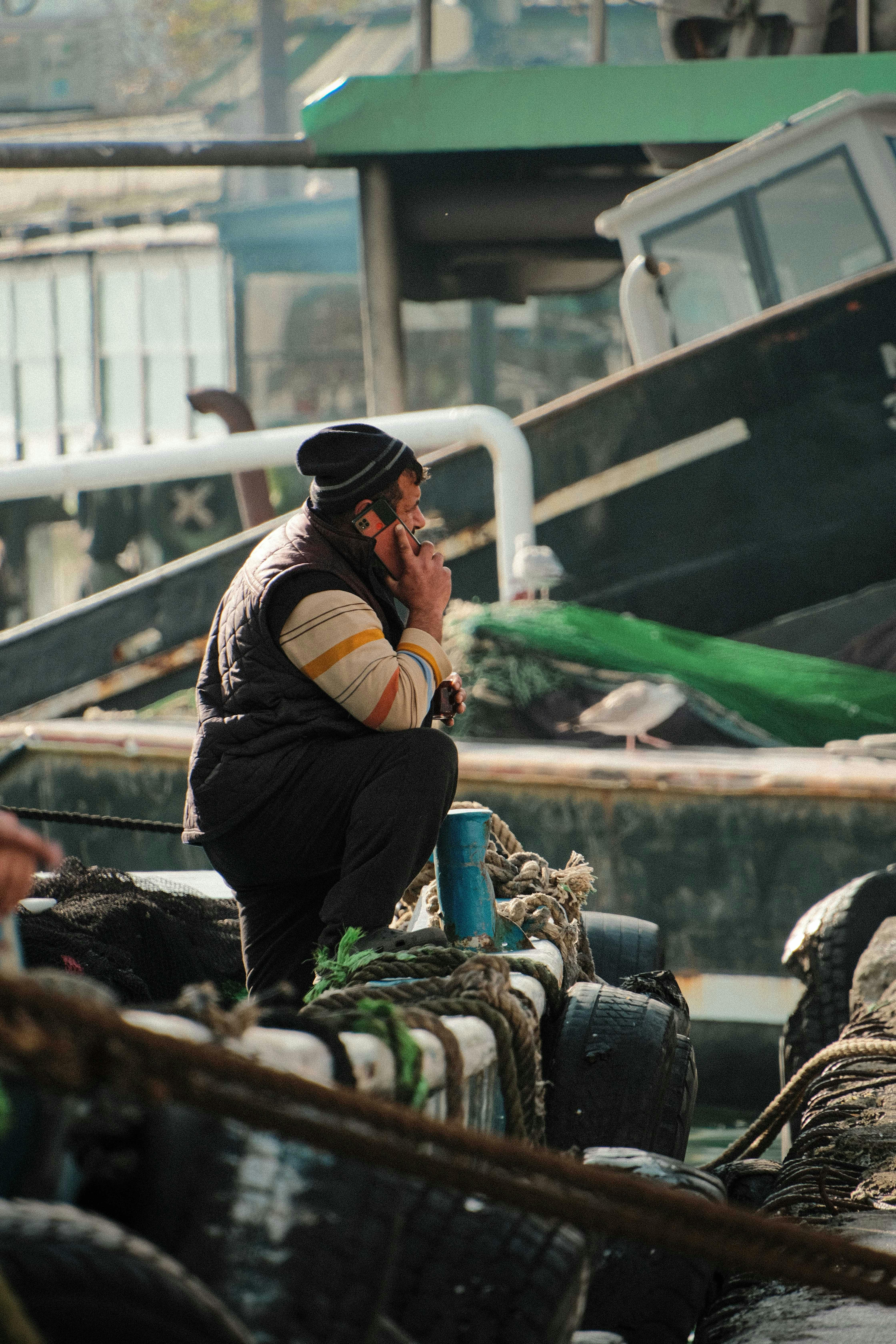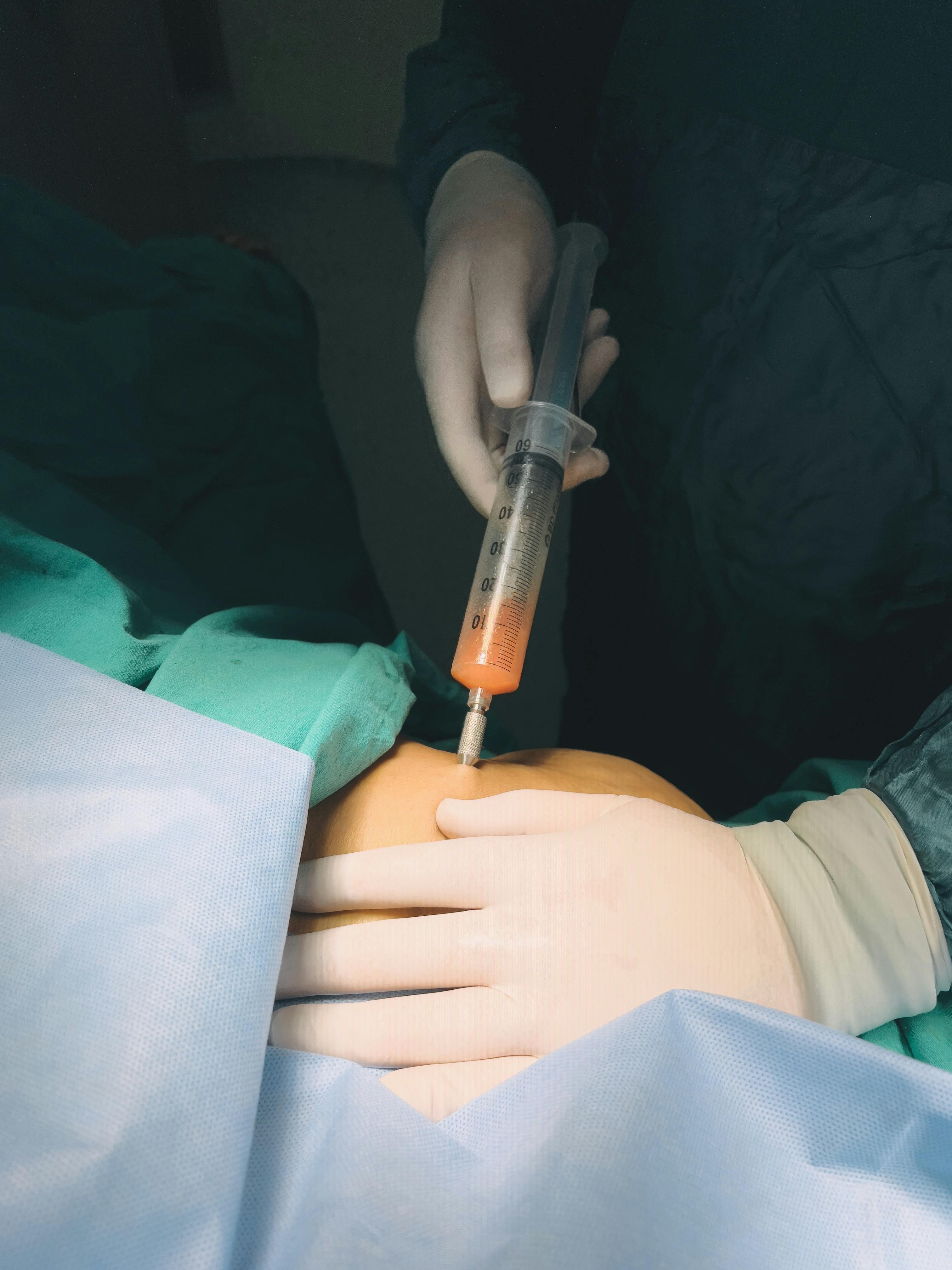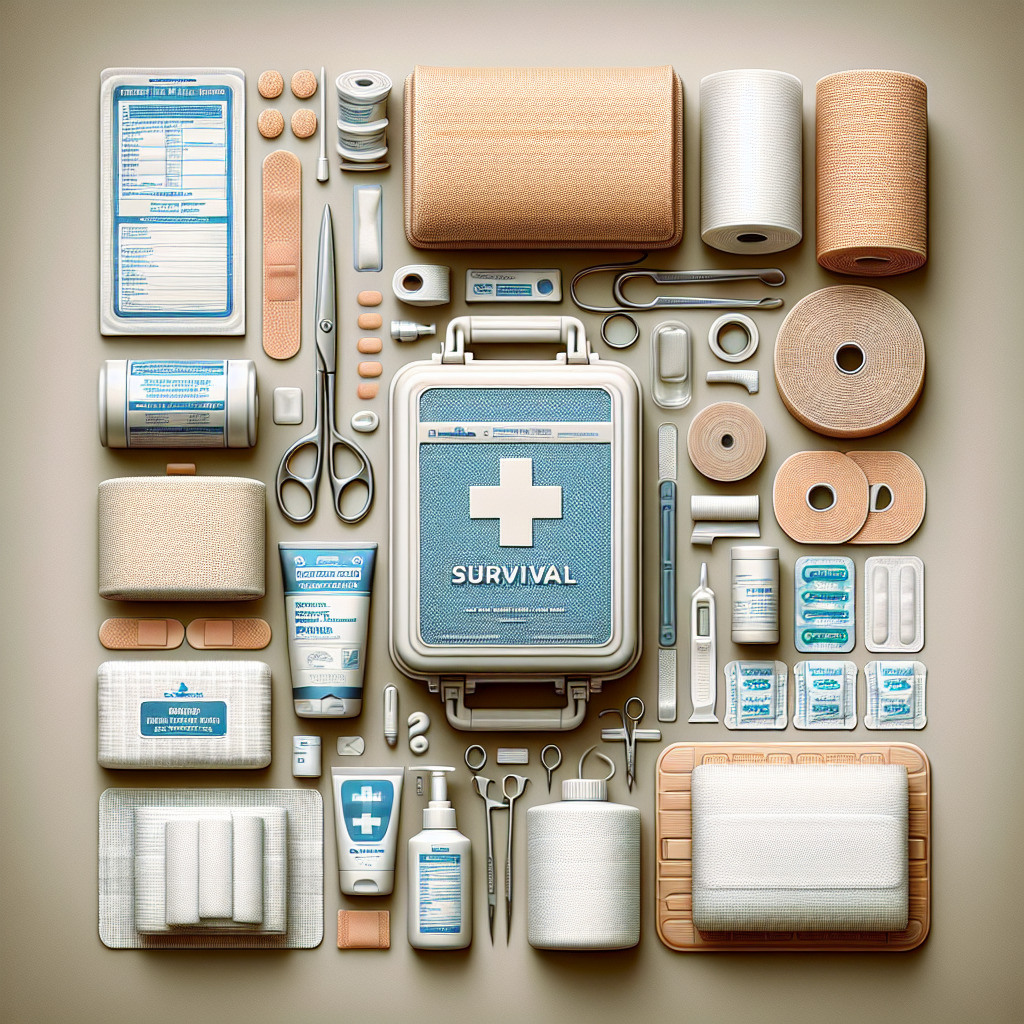In need of a survival first aid kit that will have you prepared for any emergency? Look no further! This article will highlight the essential medical tools that you must include in your survival first aid kit. From bandages and antiseptic wipes to tweezers and scissors, these tools are a must-have for any outdoor enthusiast or emergency preparedness enthusiast. Stay safe and be ready with the right medical tools in your survival first aid kit!
Bandages and Dressings
Adhesive Bandages
Adhesive bandages, also known as “band-aids,” are a must-have for any first aid kit. These small, adhesive strips are designed to cover and protect minor cuts, scrapes, and blisters. They come in various shapes and sizes to suit different wound types. Adhesive bandages are easy to apply and remove, making them a convenient option for quick wound care. They not only provide a barrier against bacteria and dirt but also help promote faster healing by keeping the wound clean and protected.
Gauze Pads
Gauze pads are versatile and essential components in first aid kits. These sterile medical dressings are made of cotton or a blend of cotton and synthetic materials. They are highly absorbent, making them ideal for controlling bleeding, cleaning wounds, and applying ointments or antiseptics. Gauze pads come in different sizes, allowing you to choose the appropriate size for your needs. Whether you need to dress a wound, apply pressure to a bleeding injury, or protect a blister, gauze pads are an indispensable tool to have.
Roller Bandages
Roller bandages are long, stretchable strips of fabric used to secure dressings or immobilize injured body parts. They are commonly used for wrapping sprains, strains, and joint injuries to provide support and compression. Roller bandages can also be used for securing splints or making improvised slings and tourniquets if necessary. They are available in various materials, such as cotton or elastic, and different widths to accommodate different body parts. Including roller bandages in your first aid kit ensures you are prepared to manage a variety of injuries effectively.
Sterile Dressings
Sterile dressings are critical for protecting wounds and preventing infection. They are large, absorbent pads made of sterile materials that provide a clean barrier to cover injuries. Sterile dressings are particularly useful for larger wounds, burns, or deep cuts that require more extensive coverage. These dressings help absorb excess moisture, promote healing, and prevent contaminants from entering the wound. Having an assortment of sterile dressings in your survival first aid kit guarantees you have the necessary supplies to handle serious injuries.
Antiseptics and Disinfectants
Antibacterial Wipes
Antibacterial wipes are convenient and effective tools for disinfecting wounds and cleaning the surrounding skin. They contain antiseptic agents that kill or inhibit the growth of bacteria, helping to minimize the risk of infection. Antibacterial wipes are individually packaged, making them portable and easily accessible. They are designed to be gentle on the skin while still providing thorough cleansing. Including a few packets of antibacterial wipes in your first aid kit is a simple yet vital way to ensure proper wound hygiene in emergency situations.
Antiseptic Solution
Antiseptic solutions, such as hydrogen peroxide or povidone-iodine, are essential for disinfecting wounds before applying dressings or bandages. These solutions work by killing bacteria, fungi, and viruses on the skin’s surface, reducing the risk of infection. Antiseptic solutions are typically available in bottles with an easy-to-apply nozzle or spray. They can be used to clean wounds, burns, or skin areas around surgical incisions. Remember to follow the instructions and dilution ratios provided by the manufacturer when using antiseptic solutions.
Hydrogen Peroxide
Hydrogen peroxide is a commonly used antiseptic and disinfectant for wound care. It is an effective agent for cleaning wounds and removing debris, dirt, or dried blood. Hydrogen peroxide works by releasing oxygen, which helps break down organic material and kill bacteria. However, it is important to note that hydrogen peroxide should not be used on deep wounds or for long-term wound care, as it can delay the healing process by damaging healthy skin cells. When used properly and in the right circumstances, hydrogen peroxide is a valuable addition to your first aid kit.

Scissors and Tweezers
Blunt-Ended Scissors
Blunt-ended scissors are an essential tool for any first aid kit. They have rounded tips to prevent accidental injury while cutting bandages, clothing, or tape. Blunt-ended scissors are particularly useful when working around delicate areas such as the face or when assisting children with first aid. They are also handy for trimming adhesive bandages to fit the wound size.
Sharp-Ended Scissors
Sharp-ended scissors are necessary for certain first aid procedures that require more precise cutting. They have pointed tips that allow for intricate cutting tasks, such as trimming clothing away from a wound or cutting sutures. Sharp-ended scissors should be handled with care and kept in a protective sheath when not in use to prevent accidental injuries.
Fine-Tipped Tweezers
Fine-tipped tweezers are an invaluable tool for removing splinters, debris, or foreign objects embedded in the skin. With their thin, pointed tips, they provide excellent precision and control when working on small or sensitive areas. Fine-tipped tweezers ensure a secure grip on the object, minimizing the risk of breakage or detachment. They should be cleaned and sterilized after each use to maintain their effectiveness and prevent infection.
Surgical Gloves
Latex Gloves
Latex gloves are commonly used in medical settings and are an excellent addition to any survival first aid kit. They provide a barrier between the responder and the patient, minimizing the risk of cross-contamination and infection transmission. Latex gloves offer a snug fit and excellent tactile sensitivity, allowing for precise wound care and medical procedures. However, please note that latex allergies are relatively common, so it’s important to have alternatives available for individuals who may be sensitive or allergic to latex.
Nitrile Gloves
Nitrile gloves are a suitable alternative to latex gloves for individuals with latex allergies. They offer similar protection and sensitivity while being hypoallergenic. Nitrile gloves are resistant to punctures, tears, and chemicals, making them durable and reliable for use during emergencies. Including both latex and nitrile gloves in your first aid kit ensures that you are prepared to meet the needs of different individuals.

Thermometer
Digital Thermometer
A digital thermometer is a vital tool for assessing body temperature, a key indicator of health. Fever can often be a sign of an underlying illness or infection. A digital thermometer provides accurate and quick temperature readings, allowing you to monitor changes in body temperature. Compact and easy to use, digital thermometers have become the go-to choice for home and first aid use. Maintaining a digital thermometer in your survival first aid kit enables you to monitor and respond to potential health concerns effectively.
CPR Mask
Pocket Mask
A CPR pocket mask is an essential tool for performing cardiopulmonary resuscitation (CPR) safely and effectively. It provides a barrier between the responder and the victim, preventing direct contact and reducing the risk of disease transmission. A pocket mask typically includes a one-way valve that allows for the delivery of rescue breaths without exposure to bodily fluids. Its compact size allows for easy storage and portability. Including a CPR pocket mask in your first aid kit ensures you are prepared to provide life-saving assistance in emergency situations.

Splinting Materials
SAM Splints
SAM splints are versatile and lightweight splinting materials used to immobilize injured limbs and provide support. These splints are made of foam-covered aluminum, allowing them to be easily molded to fit various body parts. SAM splints are waterproof and reusable, making them a reliable choice for wilderness or survival situations. They can be secured in place using roller bandages or medical tape. Having SAM splints in your first aid kit can help stabilize fractures, sprains, or dislocations until professional medical assistance is available.
Finger Splints
Finger splints are specifically designed to immobilize and protect injured fingers. They are small, lightweight, and come in various sizes to accommodate different finger lengths. Finger splints are typically made of aluminum or foam, providing the necessary support and stability to promote healing. In emergency situations where accidents involving fingers occur, having finger splints readily available in your first aid kit can help prevent further injury and aid in the recovery process.
Aluminum Splints
Aluminum splints are effective tools used to provide stability and immobilization for larger limb injuries, such as fractures or sprains. These splints are made of lightweight aluminum alloy, allowing for easy shaping and contouring to fit the injured area. Aluminum splints are typically padded or have foam cushioning to provide comfort and reduce pressure points. Including aluminum splints in your first aid kit assures you have the means to stabilize and support more severe injuries until professional medical assistance can be obtained.
Medical Tape
Micropore Tape
Micropore tape is a gentle and versatile adhesive tape commonly used in medical settings. It is made of soft, non-woven material that allows the skin to breathe while providing secure adhesion. Micropore tape is easy to tear by hand, making it highly convenient for various first aid applications. This tape is ideal for securing dressings, gauze pads, or splints in place. Its hypoallergenic properties make it suitable for individuals with sensitive skin. Having micropore tape in your survival first aid kit ensures you have a reliable means of securing and immobilizing medical supplies or dressings.
Waterproof Tape
Waterproof tape, as the name suggests, is designed to remain securely attached even when exposed to water or moisture. This type of tape is made of a strong, durable material that maintains its integrity even in wet conditions. Waterproof tape is ideal for providing long-lasting adhesion for dressings or splints in situations where water may be present, such as outdoor adventures or emergencies involving water-related injuries. Adding waterproof tape to your first aid kit ensures that your supplies stay in place, even in challenging environments.
Wound Closure Strips
Adhesive Butterfly Closures
Adhesive butterfly closures, also known as butterfly sutures, are a valuable tool for closing and securing small to medium-sized wounds. These strips are placed across the wound to approximate the edges, promoting proper healing and reducing the risk of infection. Adhesive butterfly closures are easy to apply and provide tension-free closure, preventing the need for traditional sutures in certain cases. They are particularly useful for lacerations or cuts that require precise alignment but are not deep enough to necessitate stitches.
Steri-Strips
Steri-Strips are sterile adhesive strips that are commonly used to close and support small wounds or incisions. These thin strips are made of breathable fabric or reinforced plastic and are applied across the wound to hold the edges together. Steri-Strips reduce tension and minimize scarring by keeping the wound edges in proper alignment. They are easy to apply and can be used as an alternative to traditional sutures in certain cases. Including Steri-Strips in your first aid kit ensures you are prepared to effectively close and support minor wounds.
Snake Bite Kit
Extractor Pump
A snake bite kit typically includes an extractor pump, which is specifically designed to aid in the removal of venom from snake or insect bites. The extractor pump works by creating a vacuum over the bite area and drawing out the venom. It is important to note that snake bite kits are not a substitute for prompt medical attention, and the effectiveness of the extractor pump in removing venom may vary depending on the injury. However, having a snake bite kit as part of your survival first aid kit can offer temporary relief and potentially mitigate the severity of a snake or insect bite until professional help is available.
Antivenom Serum
Antivenom serum is a specialized medication used for emergency treatment in cases of snake or venomous insect bites. This serum contains specific antibodies that neutralize the toxic components present in the venom, helping to prevent or counteract the effects of envenomation. Antivenom serum is typically administered by medical professionals trained in the treatment of venomous bites. While having access to antivenom serum in a survival first aid kit may not be feasible, it is crucial to seek immediate medical assistance if a snake or venomous insect bite occurs.
In conclusion, having a well-stocked first aid kit is essential for preparedness in emergency situations. Including bandages and dressings, antiseptics and disinfectants, scissors and tweezers, surgical gloves, a thermometer, a CPR mask, splinting materials, medical tape, wound closure strips, and snake bite kit components ensures that you have the necessary tools to provide immediate and effective care. Remember to regularly check and replace expired or used supplies to maintain the readiness of your survival first aid kit. By being well-prepared, you can confidently handle a wide range of injuries or emergencies, promoting the well-being and safety of yourself and those around you.






